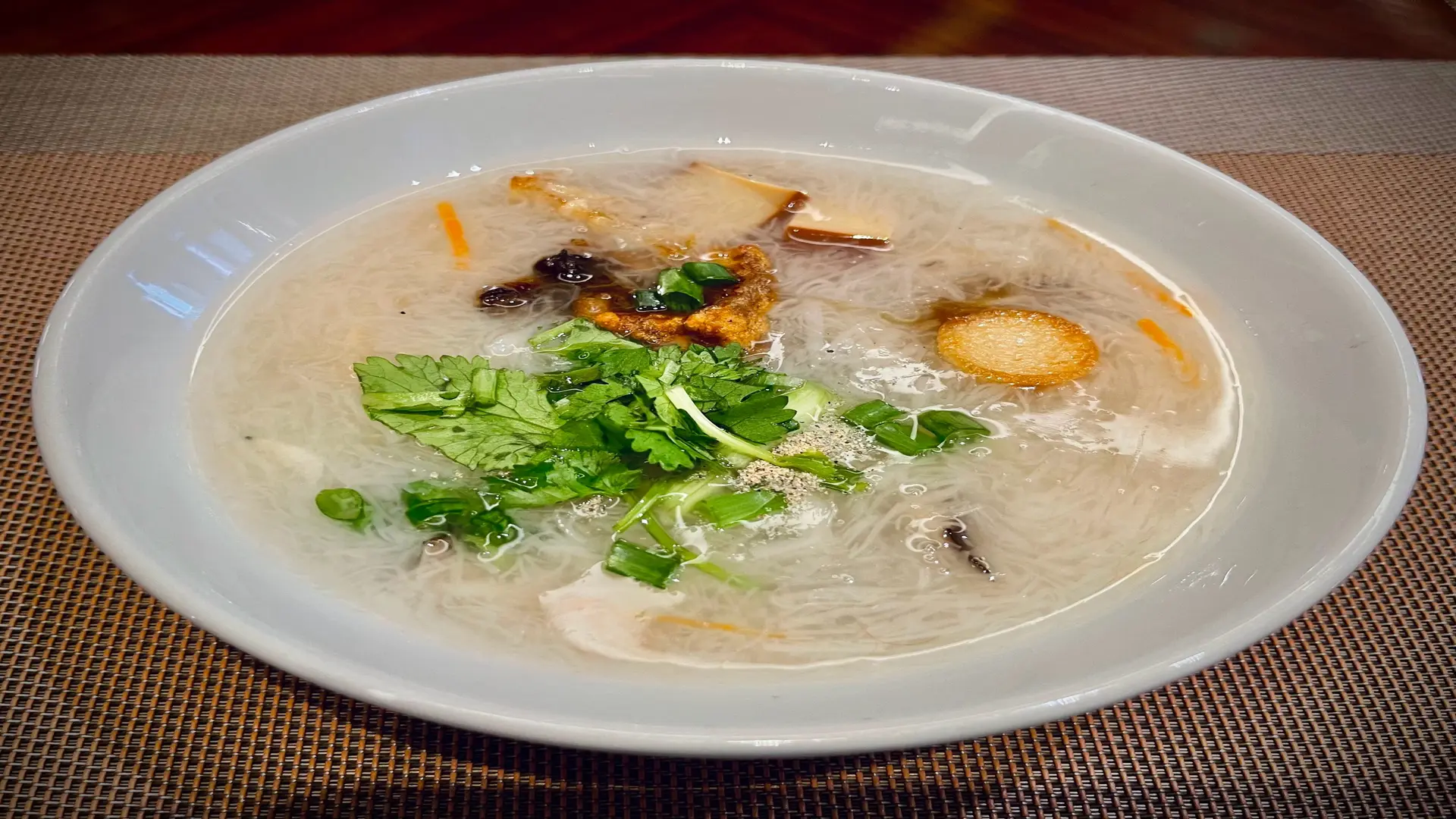“The Art of Quanzhou’s Rice Noodle Soup: A Culinary Journey Through the Silken Delights of Fujian”
作为烹饪专业人士, I take great pride in introducing you to one of the most cherished dishes of Quanzhou, a city steeped in history and culture in the province of Fujian, 中国. Known affectionately as “Mianxianhu,” this dish is a testament to the region’s culinary prowess and the ingenuity of its people.
起源和文化背景:
Mianxianhu, or rice noodle soup, has its roots deeply embedded in the culinary traditions of Fujian. It is said that this dish has been a staple in the local diet for centuries, providing sustenance and comfort to the people of Quanzhou. The dish is not just a meal; it’s a symbol of the region’s heritage, with each strand of rice noodle representing the threads that bind the community together.
成分和准备:
The making of Mianxianhu is an art form that requires precision and patience. The key ingredient is the rice noodle itself, which is made from a dough of rice flour and water, painstakingly drawn into threads as fine as a human hair. The process of creating these noodles is a labor of love, with each strand requiring the utmost care to ensure uniformity and texture.
To prepare Mianxianhu, the rice noodles are cooked in a simmering broth, which is typically made from a combination of chicken, pork bones, and various seasonings that impart a rich, savory flavor. The noodles are cooked until they reach a tender yet slightly chewy consistency, absorbing the essence of the broth.
质地和外观:
The appearance of Mianxianhu is as delicate as its taste. 米饭, 煮完美, float in the broth like silken threads, their translucent nature allowing a glimpse into the depth of the dish. The presentation is simple yet elegant, with the noodles often garnished with fresh green onions or cilantro, adding a pop of color and a burst of freshness.
Complementary Ingredients:
Mianxianhu is often served with a variety of accompaniments that enhance its flavor profile. The most popular include:
1. Large Intestine (Da Chang): Slowly braised until tender, the大肠 adds a rich, earthy flavor that complements the lightness of the noodles.
2. Vinegar Meat (Cu Rou): A dish of marinated and deep-fried pork, vinegar meat brings a tangy, crispy element to the dish.
3. Youtiao (Fried Dough Sticks): These golden, crispy sticks add a satisfying crunch that contrasts beautifully with the soft noodles.
招牌菜肴和烹饪功能:
While Mianxianhu can be enjoyed on its own, it is often the foundation for a variety of signature dishes in Quanzhou. Here are a few examples:
1. Mianxianhu with Braised Pork: A hearty dish where the tender noodles are accompanied by succulent pieces of braised pork, creating a symphony of textures and flavors.
2. Seafood Mianxianhu: Fresh seafood, such as shrimp or fish, is added to the broth, infusing it with the briny essence of the sea.
3. Vegetarian Mianxianhu: For those who prefer a meat-free option, a variety of seasonal vegetables can be added, making it a wholesome and nutritious meal.
烹饪特征:
The beauty of Mianxianhu lies in its versatility and balance. It is a dish that can be enjoyed at any time of the day, from breakfast to a late-night snack. Its delicate flavor profile and comforting nature make it a favorite among locals and visitors alike. The dish embodies the essence of Fujian cuisine: subtle, nuanced, and deeply connected to the region’s rich cultural tapestry.
综上所述, Mianxianhu is more than just a dish; it is a culinary journey through the heart of Quanzhou. Each bowl serves as a reminder of the city’s history, its people, and the art of creating something exquisite from the simplest of ingredients. 作为食品专业人士, I invite you to savor this dish, to experience the delicate dance of flavors, and to understand the passion that goes into every strand of this silken delight.
